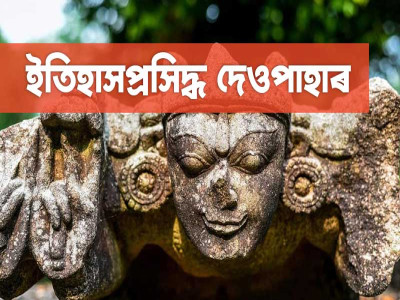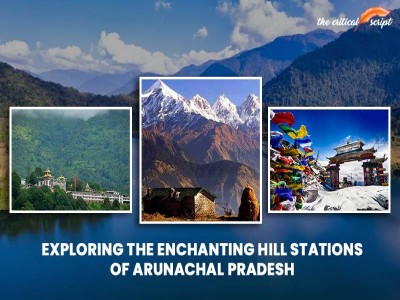
Exploring the Vibrant Festivals and Dance of the ‘Jaintias’ in Meghalaya
The enchanting state of Meghalaya,
situated in the northeastern part of India, is home to diverse ethnic groups,
each with its unique cultural traditions. Among them are the Hynniewtrep
people, comprising the Khasi, Jaintia, Bhoi, and War tribes. So, we embark on a journey to discover the
festivals and ceremonies that define the Jaintia community in Meghalaya,
showcasing their rich cultural heritage and deep connection with nature.
The Jaintia Hills, where the Jaintia people reside, witness a series of festivals that not only celebrate their traditions but also foster a sense of unity and harmony within their society. These festivities play a vital role in preserving the delicate balance between humans, their culture, and the natural environment. Presenting the three prominent festivals that are prominent in the Jaintia calendar: Behdienkhlam,Shad Sukra, and Laho Dance.
Behdienkhlam
Behdienkhlam, the crowning jewel of Jaintia festivals, occupies a central place in the socio-economic fabric of the community.It is usually celebrated annually in July after the sowing period. Its essence lies in fervent prayers for the well-being of the people, prosperity, and an abundant harvest. Celebrated throughout the Jaintia district, the grandest spectacle unfolds in Jowai, the district headquarters. It’s noteworthy that Behdienkhlam is primarily observed by the non-Christian segment of the Jaintia population, known as the “Pnars."
Legend has it that Jowai was once a dense forest, devoid of human presence. Within this verdant landscape resided five deities: four colossal stones and a river nymph. These deities yearned for the creation of human beings who would settle in their cherished abode. Their wish was granted when a wandering Mongolian tribe found solace in these mystical woods. In an outpouring of joy, "U-Mokhai," the eldest deity, initiated a magnificent dance. Though the thunderous steps of the deity initially frightened the newcomers, "U-Mokhai" reassured them, proclaiming that this land would be theirs to inhabit and prosper. And so, the tribe stayed. Many years later, during a severe deprivation, the people of Jowai sought the aid of "U-Mokhai." In response, the deity requested them to perform a community festival after the sowing season, thus giving birth to ‘Behdienkhlam’—a festival that continues to captivate the Jaintias to this day.
The Festival commences with a solemn ritual: a sacrificial offering of a pig to the deity of Thunder, known as "Knia Pyrthat." A week before the festival, the priests traverse the main road of Jowai, ringing the "Chew Chew," a resounding brass bell, which resonates throughout the town up till the forest borders. The hallmark of Behdienkhlam lies in the creation of three symbolic structures: "Dein Khlam," "Symlend," and "Khnong." These are crafted from tall trunks of trees, carefully selected from a preserved forest. Pine trees, however, are never utilized for this purpose. After spending a couple of nights in the forest, the trunks are joyfully paraded into the town accompanied by lively drumming, melodious pipes, cheerful dances, and jubilant shouts of the celebrants. These trunks are then erected in various localities, even adorning the front of individual homes.
On the fourth day of the festival, a
group of young men, led by the priests, embark on a visit to each home.
Carrying bamboo sticks, they rhythm.
Shad Sukra
The Jaintia people observe an annual festival known as Shad Sukra, which takes place in April or May. This celebration serves as a significant event marking the commencement of the sowing season. Prior to initiating the seed planting process, every Jaintia farmer eagerly anticipates the arrival of this festival.The festivities involve various rituals, dances, and musical performances featuring drums and flutes, all aimed at offering prayers for a productive and abundant season. Both men and women actively participate in the festival, adorning themselves with splendid traditional attire and elaborate gold jewelry. To witness this rich cultural extravaganza, one can visit Jowai Town in the picturesque West Jaintia Hills.
The "Laho" Dance
It is an entertainment-focused dance
festival. In their most vibrant attire, men and women of all walks take part in
the dancing. The norm is for two young guys to dance in step alongside a girl
while joining arms. Instead of the traditional drum and pipe, a
"cheerleader," a man with the talent for rhythmic recitation, recites
crude couplets, making the audience roll with laughter.
The vibrant festivals and ceremonies of the Jaintia community provide a glimpse into their rich cultural heritage and strong connection with nature. The three prominent festivals discussed - Behdienkhlam, Shad Sukra, and Laho Dance - showcase different aspects of Jaintia traditions and beliefs. By participating in these celebrations, the Jaintia community keeps their traditions alive and passes them down to future generations, ensuring the continuity of their vibrant cultural heritage.
Disclaimer: The opinions expressed in this article are those of the author's. They do not purport to reflect the opinions or views of The Critical Script or its editor.

Newsletter!!!
Subscribe to our weekly Newsletter and stay tuned.

















Related Comments